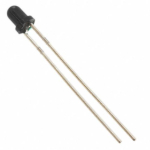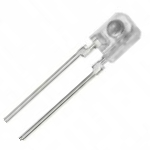| Code | photo_camera | Remains | shopping_cart | ||||||
|---|---|---|---|---|---|---|---|---|---|
| 050701 |  | Phototransistor 940nm Plugin,P=2.54mm Photodiode | total: 880 pcs маг ДП: 880 pcs |
| EVERLIGHT | ||||
| 050702 |  | Phototransistor Plugin,2.9x4x2.9mm Phototransistor | total: 970 pcs маг ДП: 970 pcs |
| EVERLIGHT |
A bipolar phototransistor is a semiconductor device with two p-n junctions and three layers of an alternating type of semiconductor - an analogue of a conventional bipolar transistor with a base current control. But in a phototransistor, the base current is the photocurrent. When the base layer of the phototransistor is illuminated, electron-hole pairs are generated in its base due to the internal photoelectric effect, generating a photocurrent. This process lowers the potential barrier from the contact potential difference in the emitter-base junction, which increases the diffusion of minority carriers (for the base) from the emitter to the base, that is, we can assume that the photocurrent in this device is the base current of a conventional transistor. We can say that the phototransistor is similar to a conventional bipolar transistor, with a reverse-biased photodiode connected between the collector and base terminals.







